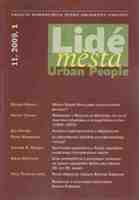Město Kutná Hora jako česKý barokní prostor?
City of Kutná Hora as a Bohemian baroque space
Author(s): Blanka AltováSubject(s): Cultural history
Published by: Univerzita Karlova v Praze - Fakulta humanitních studií
Keywords: Kutná Hora; baroque religion; nationalism; early modernity; Bohemia– 17th and 18th centuries
Summary/Abstract: The city as an urbanistic and social space is related to its broader territorial and social whole which is most often represented by a country or a state and a nation. The relationship is historically based as well as depending on the current form of the state, the country’s integration into a broader political formation and above all on the current understanding of the concept of a nation. In Baroque, Kutna Hora was a mining city, it had a status of a royal city, it belonged to the kingdom of Bohemia as well as Czech Crown lands whichwere part of the Habsbourg states and the Roman Empire. After the year 1620 Bohemia underwent a process of recatholicization which meant a fundamental change for the city of Kutna Hora. A city of utraquists and luterans changing to a city of catholics. The Jesuits became then the creators of the new image of the catholic Kutna Hora. They operated in the city from 1626 until 1773 when the friary was closed. As a matter of coincidence along with Jesuits the Baroque period with it its new visual code arrived to the city. The division of the baroque period by generations suggested by Václav Černý (1620–1650; 1650–1680; 1680–1710; 1710–1740) reflects the gradual spreading and acceptance of the Jesuit influence. Building of the Jesuit College marked significantly the town’s cityscape (panorama), this emphasis went along the Jesuits’ recatholicisation efforts. The Jesuits updated and altered furnishing of the churches in the town in accordance with Trident catholicism. They aimed at optical and content unification of sacred buildings to emphasize true presence of Jesus Christ and all the saints. Similar process of unification and actualization the Jesuits introduced in the urban areas; in a form of sculptural series and architectonically created sceneries they have converted the city – image of the world – into theatre of the world. New language of architecture, symbols and signs created a true present image in city and above ti a mental image of „Bohemian heaven“ based on emphasis on bohemian patrons. The patrons followed by St. Barbora, the patron of the town and amorous image (sculpture) of Virgin Mary from the church of St. Barbora joined the cult of image of protection (Palladium of Stará Boleslav). The concept put Kutna Hora back on the map of cult of Virgin Mary in the catholic world. The Jesuits introduced the whole system of visual communication through system of signs and symbols, within the realm of town they have created holy theatre based on the motives of Bohemian patriotism. I study the image of city from existing visual sources, which I interpret through the style analysis a iconographic method influenced by the literature of the period – The Old Memoirs of Kutna Hora (1675) from Kořínek, one of the Jesuits. I also use the method of historical synthesis in a form of an image. I follow the motif of a city as a historical representation of the Bohemian space. From the position of historical anthropology
Journal: Lidé města
- Issue Year: 11/2009
- Issue No: 1
- Page Range: 3-68
- Page Count: 66
- Language: Czech

